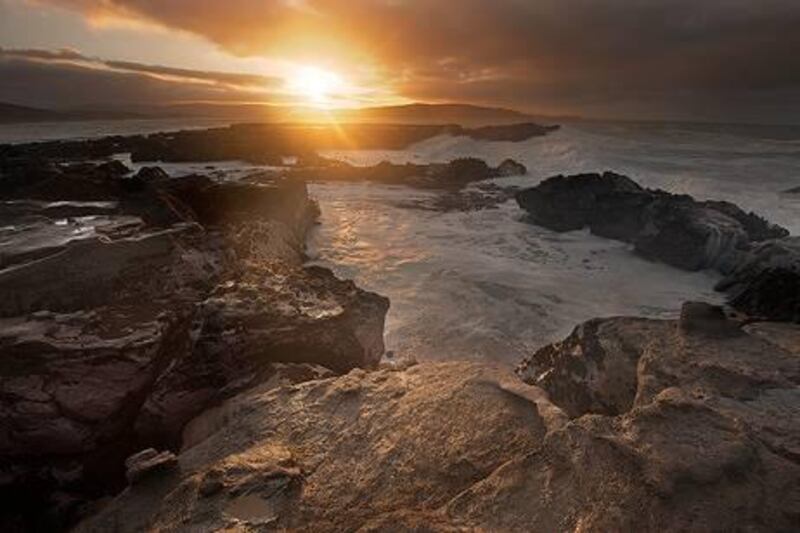DUBAI // From New Zealand's serene coasts to its dramatic mountains, a group of six Emirati and Saudi photographers embarked over the summer on a landscape tour of the country through their camera lenses.
They started on the east coast of South Island, heading to the Punakaiki Pancake Rocks and blowholes on the west coast, on the way enduring a 20-kilometre hike to Moke Lake in freezing snow.
"It was risky to spend days on end trekking and hiking deep into the heart of the wilderness," recalled Abdullaziz Abdullah bin Ali, the Emirati who led the group. "But New Zealand is one of the best locations in the world to shoot landscapes."
The photographers' work from the trip will be on display at the Ara Gallery in downtown Burj Khalifa for a month from January 15.
The young artists are also working on producing their own e-book and printed books, as well as their photographs.
The group faced challenges, climbing the steep and snowy face of the 4,000-metre Mount Cook, one of the highest peaks in New Zealand, camping out in ice-cold temperatures and plummeting down waterfalls at Purakaunui Falls.
"Nature presents a lot of difficulties when it comes to landscape photography," said Jamal Al Badia, a Saudi member of the group.
Overcoming these obstacles taught them new skills.
"I learnt how to dig and dive into the wild to fetch beautiful sceneries," said Mohammed Al Jaberi, an Emirati. "It also taught me a great sense of adventure."
Abdullah bin Touq, another Emirati, said the tour had changed his life. "I came back a better photographer who really understood what nature was all about," he said. "I became more keen to explore new places and learn to be patient to get the right colours in the sky and the golden hours because they change in a matter of seconds."
After three members of the group went home, the others stayed in New Zealand into August and spent part of Ramadan climbing Mount Cook. "When you're fasting, it gets really hard," said Bin Ali.
For Bin Touq, it all started 15 years ago. "My father had bought me a Pentax SLR and I started shooting pictures of school trips and family holidays," the 27-year-old said. "Then I started thinking about it more seriously and considered taking it one step higher."
Photography has grown rapidly as an art form in the Gulf in recent years, especially in the UAE, which now has hundreds of galleries.
"If we look at the past few years specifically, we can clearly find that the UAE has the highest rate of photography competitions, exhibitions, societies and clubs," said Bin Ali.
Much the same is true of Saudi Arabia, according to Al Badia. "The photography community in my country is growing rapidly," he said.
Ali Otaibi, a Saudi who had never experienced snow before, agreed. "It's becoming really popular in Saudi but we don't have any organisations or centres specialising in landscape photography unfortunately," he said. "And many families in Saudi also don't support their children in this field of work."
That was the case for Mohammed Ahmed Ahli, an Emirati, at first. "My family was disappointed in me for choosing photography," he said. "They called me crazy for how much I risked for it." But as they saw his work, their attitude changed.
The next step may be for photographers to start specialising.
"We need to stop being generalist photographers and consider specialisations, such as landscape photography for instance," Bin Ali said. "I always thought, 'Why can't Arabs compare themselves to Europeans or Americans?'"






